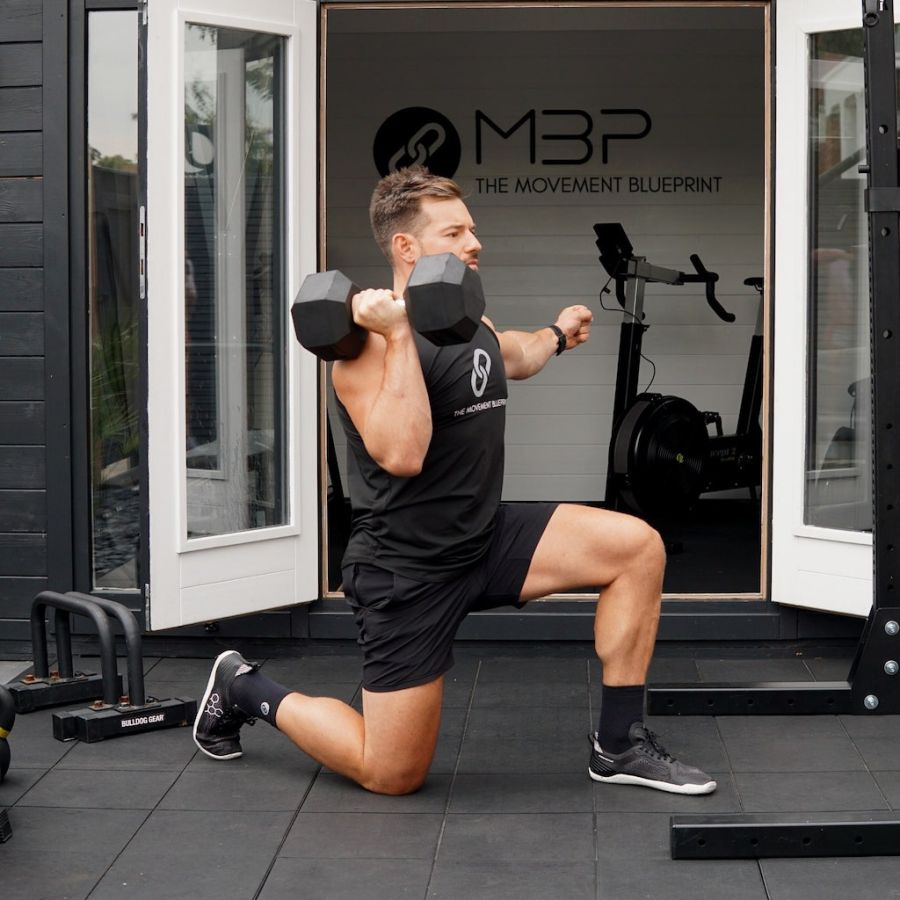Building a body that serves you in life as well as in the gym requires your training stimulus to be well-rounded. Similarly, what you do outside of the gym is paramount for staying injury-free.
It all boils down to small, positive choices that become habits and eventually as ingrained in your life as brushing your teeth or making the morning coffee.
Here The Movement Blueprint‘s Harvey Lawton outlines the most important factors for staying fit, healthy and injury-free.
Create a well-rounded plan
Lifestyles are becoming ever more sedentary, placing a record number of limitations on the body and its ability to function. If these limitations are left unaddressed, the body will compensate by seeking out the path of least resistance – which isn’t always favorable.
When it comes to your training, applying the correct stimulus to your body will result in improved performance across whatever sport or lifestyle choices you choose. That means incorporating:
- Adequate mobility training: training your muscles and joints through full ranges of motion.
- Progressive overload: gradual improvements, while ensuring you aren’t overcooking yourself week on week.
- Functional fitness: training the functional movement patterns outlined below.
Within your week’s training plan, look to incorporate the following:

- SQUAT
Why? The squat is a multi-joint movement that trains full-body strength.
How? Ensure you’re flexing your knees and hips at the same time, allowing your knees to go forward over your toes. Aim to maintain tension throughout the movement.
- LUNGE
Why? The lunge pattern is highly transferable to the gait cycle (walking, running and cycling). It trains mobility at the ankles, knees and hips, as well as pelvic and single-leg stability.
How? Step at hip-width apart to aid stability – you don’t need to be walking on a tightrope.
- HINGE
Why? The hinge is not only highly transferable to the movements we do day-day-day, it is also the bulletproof back-builder. Hinging trains the posterior chain, which is the network of muscles that run from your shoulders, down to your calves. It also trains your glutes, hamstrings and back musculature for improved power output.
How? Allow your hips to be the main mover, pushing back while your torso remains in a stacked position (ribcage and pelvis on top of each other) as you hinge forward.
- CARRY
Why? One of the most underrated and underused training modalities, carries train both capacity and full-body strength. A carry requires orientation of the ribcage and pelvis, thus training stability. It also trains loaded gait cycle patterns.
How? Wherever you’re holding the load, ensure you have an upright pillar (shoulder, hips and knees all stacked on top of each other).
- PUSH
Why? Any pushing movement will train integral muscle groups that subsequently help to improve mobility and strength. Pushing patterns also improve function at the ball and socket joint.
How? Allow your shoulder blade to move with every pushing motion to allow for greater stability at the joint.
- PULL
Why? Pulling patterns require the lats to contract, and the lats play an integral role in the way the trunk functions, as well as supporting the shoulder joints. If conditioned correctly, the lats can also help to alleviate pain at the shoulders and lower back, making pulling movements an integral component. Pull bias patterns are also highly transferrable to postural improvements and function.
How? When performing rowing movements, aim to pull your elbow back towards your hip in an arc-like motion.
Develop cardiovascular fitness
Your cardiovascular fitness is integral to your body’s ability to regulate, recover and react. It has an effect on your stress levels, nervous system response, performance and recovery.
Training and developing your cardiovascular system should be high up on your priority list. That may be through longer bouts of exercise at a lower intensity – such as a hike or an easy-paced bike ride – or through shorter, higher-intensity interval sessions.
Optimize your training recovery
The ability to regulate stress has a significant effect on your physique, readiness to perform, and the inflammation that sits in your body.
If the stress needle is too far one way, the scales become imbalanced and the risk of injury or burnout is heightened tenfold. Adequate sleep (seven to eight hours per night) and a training plan that integrates sufficient recovery protocols is crucial to staying injury-free.
Nail your nutrition
Input is quite literally output. Everything that you put into your body has a direct impact on your performance. Aim to prioritize quality whole foods that are easy to digest as a readily available energy source.
Try to stay away from highly processed foods that cause greater stress on the body in the process of breaking them down. Fueling correctly around training will both minimize your risk of injury and burnout, and speed up your recovery.
If you’re looking for a training plan that incorporates all the above, check out The Movement Blueprint’s PERFORM online programme at themovementblueprint.co/perform







